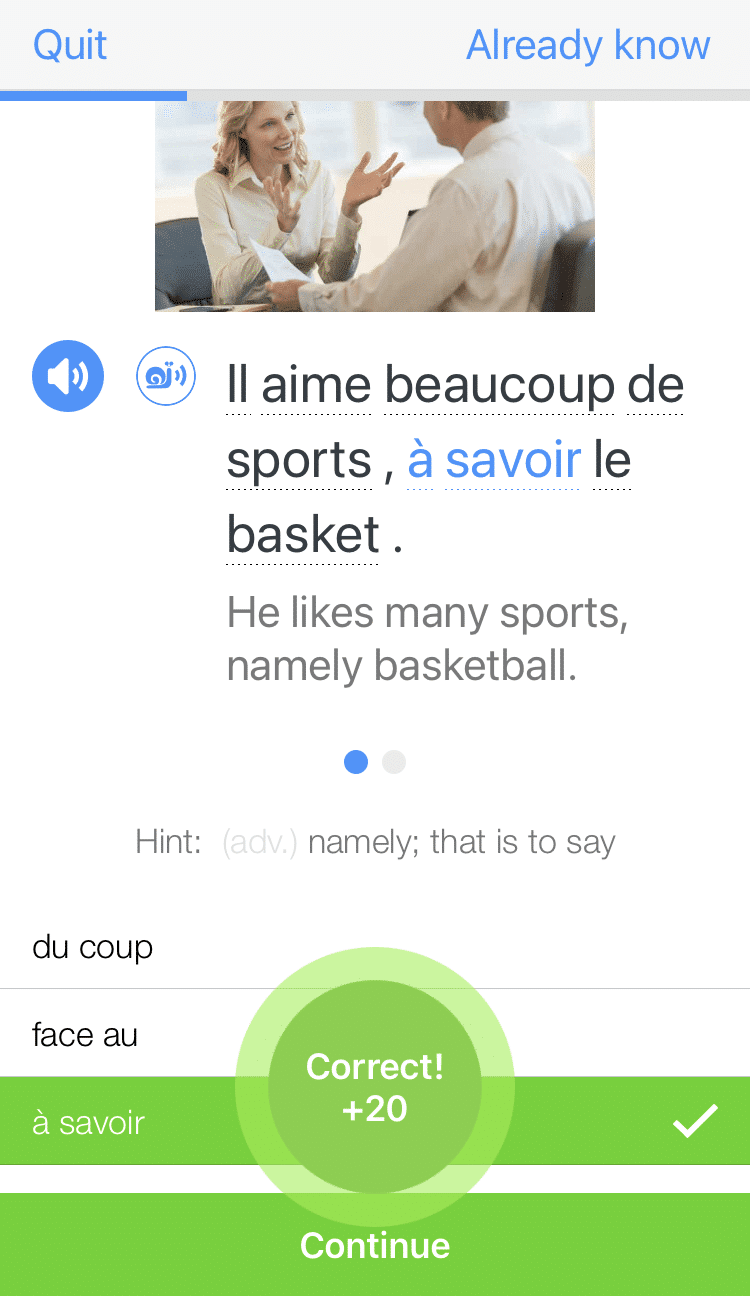Irregular Subjunctive Verbs in French

If you’ve been studying the subjunctive—one of the most notorious French grammatical moods—you may already know that there are plenty of irregular forms. Fortunately, it’s just a matter of getting comfortable with a few common patterns, even when it comes to the French irregular subjunctive.
In this post, you’ll find three tricks to learn to bring order to irregular subjunctive forms with example conjugations.
Download: This blog post is available as a convenient and portable PDF that you can take anywhere. Click here to get a copy. (Download)
What Are the Regular French Subjunctive Rules?
In order to understand the irregular subjunctive in French, we must first understand the rules for the regular subjunctive. We’ll concentrate on the present tense throughout this article to keep things simple, since that’s the subjunctive tense you’re most likely to encounter.
First, identify the present tense ils/elles (“they” masculine/“they” feminine) form of your verb and remove the -ent ending. Then, replace the ending with the following, depending on your subject:
| Subject | Ending |
|---|---|
| je (I) | -e |
| tu (you [informal]) | -es |
| il/elle/on (he/she/one) | -e |
| nous (we) | -ions |
| vous (you [formal or plural]) | -iez |
| ils/elles (they) | -ent |
For example, if we wanted to put the regular verb choisir (to choose) in the present subjunctive, we would start with ils/elles choisissent (they choose). Next, we chop off the -ent ending so we’re left with the stem choisiss-.
Now we add the subjunctive endings:
| French | English |
|---|---|
| que je choisisse | I choose |
| que tu choisisses | you choose |
| qu'il/elle/on choisisse | he/she/one chooses |
| que nous choisissions | we choose |
| que vous choisissiez | you choose (formal or plural) |
| qu'ils/elles choisissent | they choose |
Suffice it to say there are many verbs that don’t follow regular subjunctive conjugation rules. So now that you know the regular rules, you’re ready to break them.
French Irregular Subjunctive Tricks
Just because a verb is irregular in the subjunctive doesn’t mean there are no patterns to rely on.
Irregular subjunctive verbs can be grouped into two main groups that share the same rules, which I’ll cover below. Then I’ll show you a third group that breaks all the rules.
1. Verbs with Two Stems
Remember how we created our subjunctive stems above, by chopping -ent off of the present tense ils/elles conjugation? Some verbs have two different stems in the subjunctive depending on the subject.
For example, the verb jeter (to throw) has the stem jett- for the je, tu, il/elle/on and ils/elles conjugations and the stem jet- for the nous and vous conjugations. Check out this common verb conjugated fully with its two stems:
| French | English |
|---|---|
| que je jette | I throw |
| que tu jettes | you throw |
| qu'il/elle/on jette | he/she/one throws |
| que nous jetions | we throw |
| que vous jetiez | you throw (formal or plural) |
| qu'ils/elles jettent | they throw |
Not too complicated, right?
Lucky for you, there are many other verbs that follow this two-stem pattern: one stem for the je, tu, il/elle/on and ils/elles conjugations and another for the nous and vous conjugations. Some stem changes are small like the one above, while others are big—as in, the two stems look quite different. Let’s look at some of these verbs more deeply.
Verbs with Small Stem Changes
Generally speaking, these stem changes come down to a single letter or accent. Here are some very common examples with conjugations so you can see for yourself:
Aller (to go) has the stems aill– and all-:
| French | English |
|---|---|
| que j'aille | I go |
| que tu ailles | you go |
| qu'il/elle/on aille | he/she/one goes |
| que nous allions | we go |
| que vous alliez | you go (formal or plural) |
| qu'ils/elles aillent | they go |
Lever (to lift) has the stems lèv– and lev-:
| French | English |
|---|---|
| que je lève | I lift |
| que tu lèves | you lift |
| qu'il/elle/on lève | he/she/one lifts |
| que nous levions | we lift |
| que vous leviez | you lift (formal or plural) |
| qu'ils/elles lèvent | they lift |
Essayer (to try) has the stems essai- and essay-:
| French | English |
|---|---|
| que j'essaie | I try |
| que tu essaies | you try |
| qu'il/elle/on essaie | he/she/one tries |
| que nous essayions | we try |
| que vous essayiez | you try (formal or plural) |
| qu'ils/elles essaient | they try |
Appeler (to call) has the stems appell- and appel-:
| French | English |
|---|---|
| que j'appelle | I call |
| que tu appelles | you call |
| qu'il/elle/on appelle | he/she/one calls |
| que nous appelions | we call |
| que vous appeliez | you call (formal or plural) |
| qu'ils/elles appellent | they call |
In addition to those common verbs, here’s a list of verbs with small stem changes that are useful to remember:
| Verbs | Stem changes |
|---|---|
| Acheter (to buy) | achèt- for je, tu, il/elle/on and ils/elles achet- with nous and vous |
| Croire (to believe) | croi- for je, tu, il/elle/on and ils/elles croy- with nous and vous |
| Ennuyer (to bore) | ennui- for je, tu, il/elle/on and ils/elles ennuy- with nous and vous |
| Préférer (to prefer) | préfèr- for je, tu, il/elle/on and ils/elles préfér- with nous and vous |
| Prendre (to take) | prenn- for je, tu, il/elle/on and ils/elles pren- with nous and vous |
| Voir (to see) | voi- for je, tu, il/elle/on and ils/elles voy- with nous and vous |
Verbs with Big Stem Changes
For these verbs, the differences between stems are more significant, usually involving a group of letters.
Some of the most common verbs in this group include the following:
Vouloir (to want) has the stems veuill- and voul-:
| French | English |
|---|---|
| que je veuille | I want |
| que tu veuilles | you want |
| qu'il/elle/on veuille | he/she/one wants |
| que nous voulions | we want |
| que vous vouliez | you want (formal or plural) |
| qu'ils/elles veuillent | they want |
Devoir (to have to) has the stems doiv- and dev-:
| French | English |
|---|---|
| que je doive | I have to |
| que tu doives | you have to |
| qu'il/elle/on doive | he/she/one has to |
| que nous devions | we have to |
| que vous deviez | you have to (formal or plural) |
| qu'ils/elles doivent | they have to |
Venir (to come) has the stems vienn- and ven-:
| French | English |
|---|---|
| que je vienne | I come |
| que tu viennes | you come |
| qu'il/elle/on vienne | he/she/one comes |
| que nous venions | we come |
| que vous veniez | you come (formal or plural) |
| qu'ils/elles viennent | they come |
In addition to these three common verbs, here’s a list of other “big stem change” verbs with their dual stems:
| Verbs | Stem changes |
|---|---|
| Tenir (to keep) | tienn- for je, tu, il/elle/on and ils/elles ten- with nous and vous |
| Boire (to drink) | boiv- for je, tu, il/elle/on and ils/elles bev- with nous and vous |
| Mourir (to die) | meur- for je, tu, il/elle/on and ils/elles mour- with nous and vous |
| Recevoir (to receive) | reçoiv- for je, tu, il/elle/on and ils/elles recev- with nous and vous |
2. Verbs with Irregular Stems
Unlike the irregular subjunctive verbs above, some verbs simply have an irregular stem that you’ll tack your endings onto when conjugating. Not to worry, though: once you memorize the stem, the rest is easy!
For example, one of the most common verbs in this category is faire (to do/make). It has the irregular subjunctive stem fass-, and the normal subjunctive endings are added to that. Check out its full conjugation:
| French | English |
|---|---|
| que je fasse | I do |
| que tu fasses | you do |
| qu'il/elle/on fasse | he/she/one does |
| que nous fassions | we do |
| que vous fassiez | you do (formal or plural) |
| qu'ils/elles fassent | they do |
Here are some other common verbs with irregular subjunctive stems:
| Verbs | Irregular subjunctive stems |
|---|---|
| Pouvoir (to be able to) | puiss- |
| Savoir (to know) | sach- |
| Pleuvoir (to rain) | pleuv- |
| Falloir (to be necessary) | faill- |
Keep in mind that pleuvoir and falloir are normally only ever conjugated in the il/elle/on form. For example, we would only say something like, il est nécessaire qu’il pleuve (it is necessary that it rains).
3. Completely Irregular Subjunctive Verbs
There are some verbs that don’t seem to follow any rhyme or reason in the subjunctive. Not only are their stems totally irregular, but their endings also don’t follow the patterns outlined above.
Fortunately, this group includes some of the most commonly used verbs in the French language—être (to be) and avoir (to have)—so you may learn them naturally simply through exposure.
Être :
| French | English |
|---|---|
| que je sois | I am |
| que tu sois | you are |
| qu'il/elle/on soit | he/she/one is |
| que nous soyons | we are |
| que vous soyez | you are (formal or plural) |
| qu'ils/elles soient | they are |
Avoir :
| French | English |
|---|---|
| que j'aie | I have |
| que tu aies | you have |
| qu'il/elle/on ait | he/she/one has |
| que nous ayons | we have |
| que vous ayez | you have (formal or plural) |
| qu'ils/elles aient | they have |
Where to Practice the French Subjunctive
It can be helpful to have interactive practice tools to make sure you really remember everything. Here are my recommendations:
- Languageguide.org has a quiz that allows you to practice conjugating only present subjunctive irregular forms. Afterward, check out its subsequent quiz that mixes both regular and irregular verbs in the present subjunctive.
- The FluentU program lets you learn the subjunctive by watching native French speakers use it in authentic French videos.
FluentU takes authentic videos—like music videos, movie trailers, news and inspiring talks—and turns them into personalized language learning lessons.
You can try FluentU for free for 2 weeks. Check out the website or download the iOS app or Android app.
P.S. Click here to take advantage of our current sale! (Expires at the end of this month.)
- Want a more comprehensive look at irregular verbs? Sporcle offers a quiz that allows you to conjugate common irregular subjunctive verbs fully.
- Lawless French has a quiz with a mix of regular and irregular verbs. This fill-in-the-gap exercise allows you to practice the present subjunctive conjugations in context with example sentences.
Now that you’ve learned these three tricks, get out there and get conjugating with the French irregular subjunctive!
Bonne chance !
(Good luck!)
Download: This blog post is available as a convenient and portable PDF that you can take anywhere. Click here to get a copy. (Download)
And one more thing...
If you like learning French on your own time and from the comfort of your smart device, then I'd be remiss to not tell you about FluentU.
FluentU has a wide variety of great content, like interviews, documentary excerpts and web series, as you can see here:

FluentU brings native French videos with reach. With interactive captions, you can tap on any word to see an image, definition and useful examples.

For example, if you tap on the word "crois," you'll see this:

Practice and reinforce all the vocabulary you've learned in a given video with learn mode. Swipe left or right to see more examples for the word you’re learning, and play the mini-games found in our dynamic flashcards, like "fill in the blank."

All throughout, FluentU tracks the vocabulary that you’re learning and uses this information to give you a totally personalized experience. It gives you extra practice with difficult words—and reminds you when it’s time to review what you’ve learned.
Start using the FluentU website on your computer or tablet or, better yet, download the FluentU app from the iTunes or Google Play store. Click here to take advantage of our current sale! (Expires at the end of this month.)








